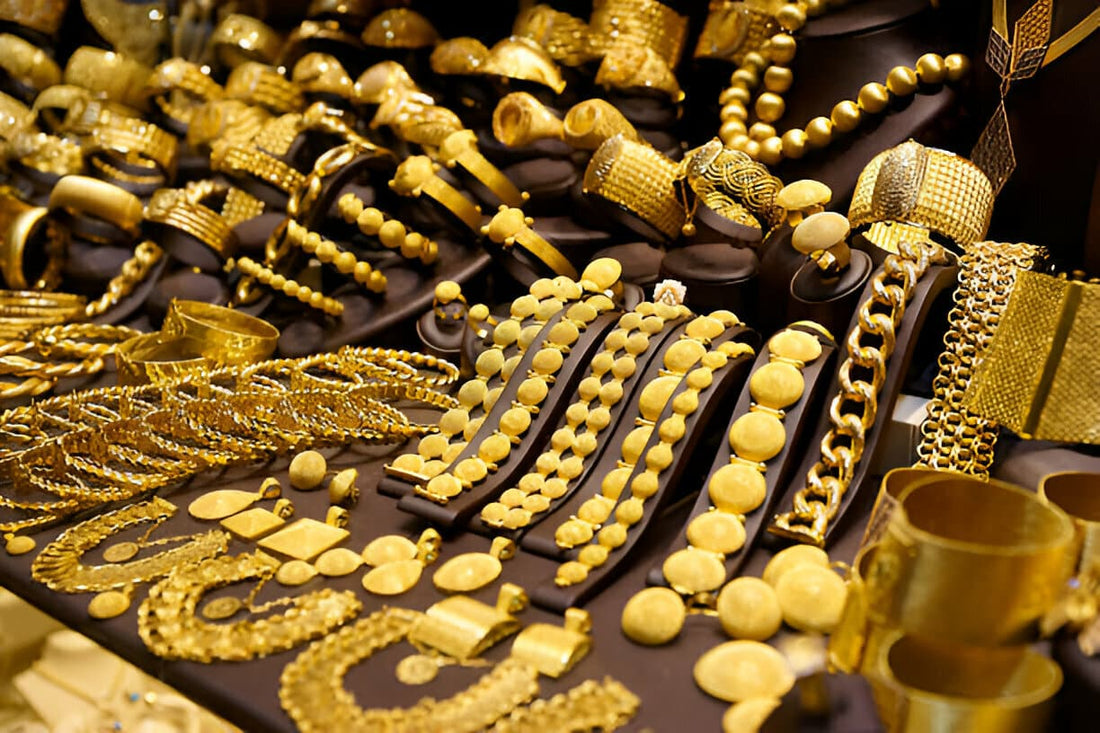
How to Keep Gold-Plated Jewelry from Tarnishing
Contrary to solid gold, which contains a high consistency of gold alloy, gold-plated jewelry is composed of a base metal (think: brass, copper, and stainless steel) and is later covered through a plating process with a thin layer of gold. The result is similar to a gold piece, but the thin plating often leaves wearers frustrated when it begins to reveal the underlying metal, resulting in discoloration. But if you think it's impossible to keep your pieces looking their best for longer than a matter of months, don't worry: gold is one of the most valuable resources in the world and will last a very long time, as long as it’s cared for properly. While it is an extra step, cleaning plated gold is very simple and requires no high-tech materials. You likely already own everything you need to improve the shine of your gold plated jewelry. Ahead, learn four easy steps and tricks to keep gold-plated jewelry from tarnishing.
Why Does Gold-Plated Jewelry Tarnish?
Before we discuss tips to prevent tarnishing, let's tackle why it occurs in the first place. This is largely because gold plating is a thin layer above a base metal, which makes pieces stronger and less likely to bend. Unfortunately, over time, the base metal will eventually come to the surface, causing the metal and the gold to discolor. This process breaks the gold down and requires proper polishing and maintenance to restore its shine. Luckily, there are tips to prevent gold-plated jewelry from tarnishing so it keeps its luxurious look.
Invest in a Soft Cloth
We recommend cleaning pieces at least once a year, and every three to six months for most-loved pieces. Gold jewelry can be cleaned with a soft, non-abrasive, and lint-free cloth or chamois to keep the shine. Start by gently rubbing the surface of the gold-plated jewelry and clean or spot treat as needed. Do not use a polishing cloth, as this will strip away the plating. Regularly cleaning and wiping down your jewelry after wear can help keep your pieces shiny and scratch-free for longer. However, if it’s gold-plated sterling silver, regular wear can be part of your maintenance process. The oils in our skin help prevent tarnish build-up on silver. If you need a deep clean, mix warm water and dish soap in a small bowl, and soak pieces for a few minutes before rinsing and wiping them clean. It’s important not to use an antibacterial soap, as the chemical might tarnish gold-plating. If this still doesn’t do the trick, you can always take the piece in for professional cleaning or re-plating.
Avoid Unnecessary Contact with Water
To keep your jewelry from premature damage, be sure to take off gold-plated jewelry when showering or swimming. Chlorine, salt water, and freshwater can damage precious metals by dulling or eroding them. Soapy water when bathing and showering can also leave a thin film, which makes the metal seem dull. And because of the chemicals present in perfume, hairspray, makeup, deodorants, and other beauty products, the golden rule is to make gold-plated jewelry the last thing you put on and the first thing you take off.
Be Mindful with Perfume
Avoid spraying your plated pieces—or even solid gold pieces—directly with perfume. Depending on the perfume, the chemicals can create a reaction similar to oxidation, which means it can turn your gold black. It’s reversible but can be a little shocking if you’re not expecting it.
Store Gold-Plated Jewelry Strategically
Understanding how best to store your go-to bracelets or earrings is just as important as knowing how to clean your gold-plated jewelry. We recommend storing jewelry in a pouch, case, or jewelry box to prevent tarnishing and fading. If you want to take the ultimate care of your jewelry, store it in a dark, cool, and dry place to avoid humidity and heat, which can cause tarnishing. In addition, storing jewelry in a pouch or dark area will prevent the opportunity to be exposed to daily humidity which could also alter the initial plating. Make sure your pieces are somewhat separated to avoid contact with objects that can scratch or chip the finish. Case in point: when gold-plated jewelry is exposed to external elements or chemicals, certain base metals may cause discoloration. Brass, for instance, is a very reactive metal, and when it’s exposed to high levels of humidity or salt water, the brass can begin reacting and breaking through the plating.
How Long Should Gold-Plated Jewelry Last?
You should be able to maintain gold-plated jewelry for up to five years with proper care but gold-plated jewelry can tarnish even within months if proper care is not maintained. It’s a matter of keeping it away from the elements—salt, water, sweat, and high humidity—and chemicals from cleaners or perfumes. And if it starts to fade, you can restore your beloved pieces by learning how to fix tarnishing or making it like new again through re-plating.







No comments